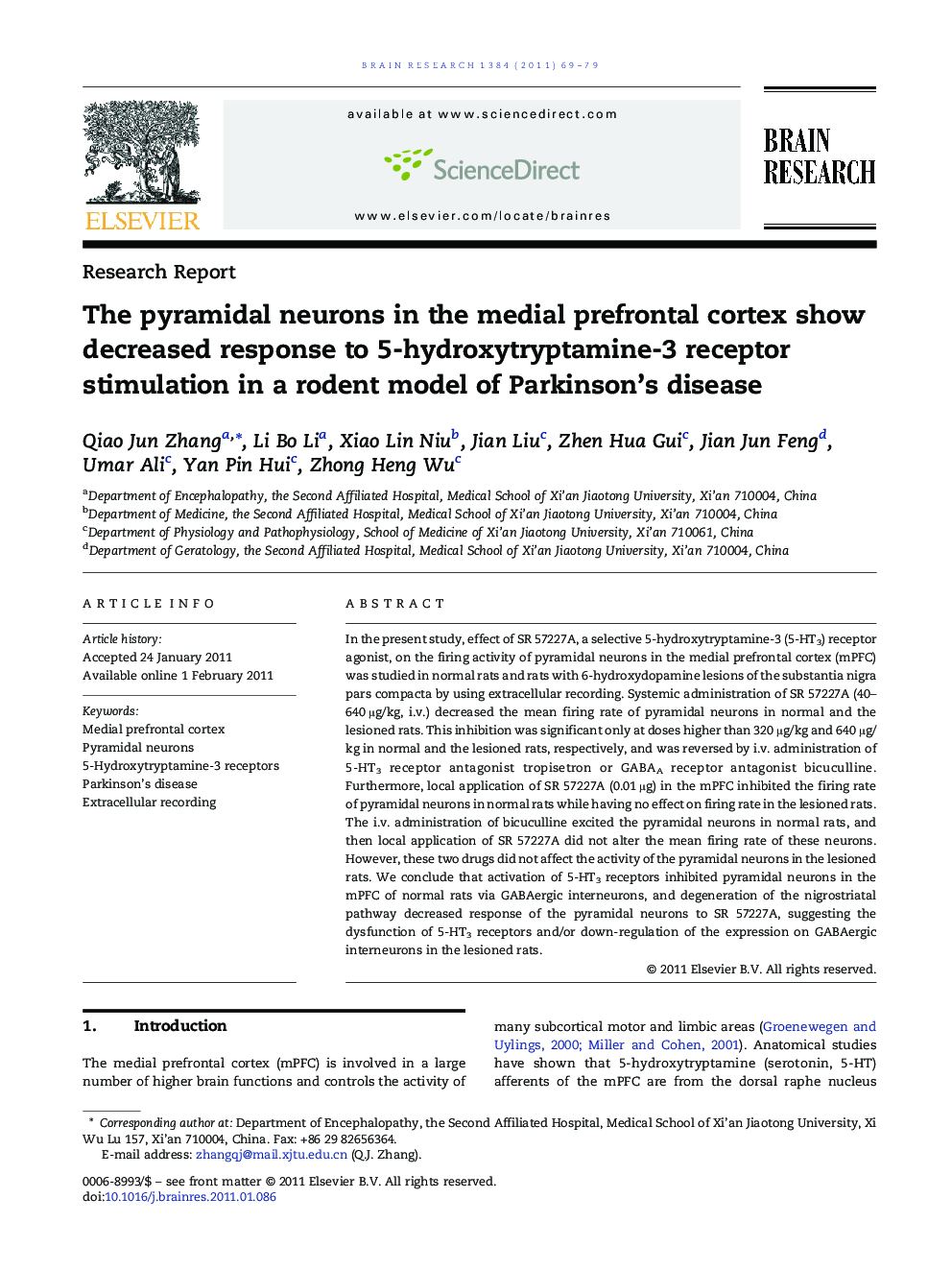| Article ID | Journal | Published Year | Pages | File Type |
|---|---|---|---|---|
| 6265027 | Brain Research | 2011 | 11 Pages |
In the present study, effect of SR 57227A, a selective 5-hydroxytryptamine-3 (5-HT3) receptor agonist, on the firing activity of pyramidal neurons in the medial prefrontal cortex (mPFC) was studied in normal rats and rats with 6-hydroxydopamine lesions of the substantia nigra pars compacta by using extracellular recording. Systemic administration of SR 57227A (40-640 μg/kg, i.v.) decreased the mean firing rate of pyramidal neurons in normal and the lesioned rats. This inhibition was significant only at doses higher than 320 μg/kg and 640 μg/kg in normal and the lesioned rats, respectively, and was reversed by i.v. administration of 5-HT3 receptor antagonist tropisetron or GABAA receptor antagonist bicuculline. Furthermore, local application of SR 57227A (0.01 μg) in the mPFC inhibited the firing rate of pyramidal neurons in normal rats while having no effect on firing rate in the lesioned rats. The i.v. administration of bicuculline excited the pyramidal neurons in normal rats, and then local application of SR 57227A did not alter the mean firing rate of these neurons. However, these two drugs did not affect the activity of the pyramidal neurons in the lesioned rats. We conclude that activation of 5-HT3 receptors inhibited pyramidal neurons in the mPFC of normal rats via GABAergic interneurons, and degeneration of the nigrostriatal pathway decreased response of the pyramidal neurons to SR 57227A, suggesting the dysfunction of 5-HT3 receptors and/or down-regulation of the expression on GABAergic interneurons in the lesioned rats.
Research Highlights⺠5-HT3 agonist SR 57227A (i.v.) inhibited pyramidal neurons of the mPFC in rats. ⺠This inhibition was reversed by GABAA antagonist bicuculline. ⺠Local application of SR 57227A in the mPFC decreased the rate of neurons in rats. ⺠SR 57227A (i.v.) only high dose inhibited the neurons in the 6-OHDA-lesioned rats. ⺠Local application of SR 57227A did not affect the activity of neurons in the lesioned rats.
